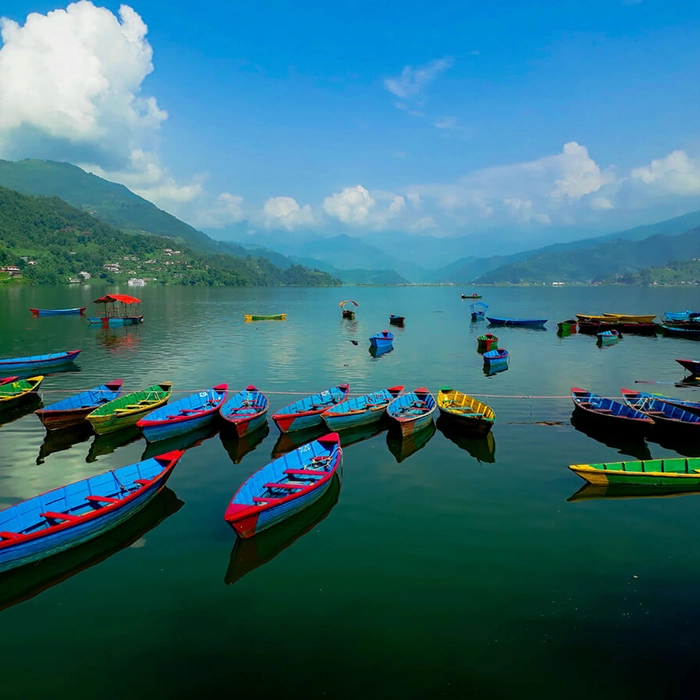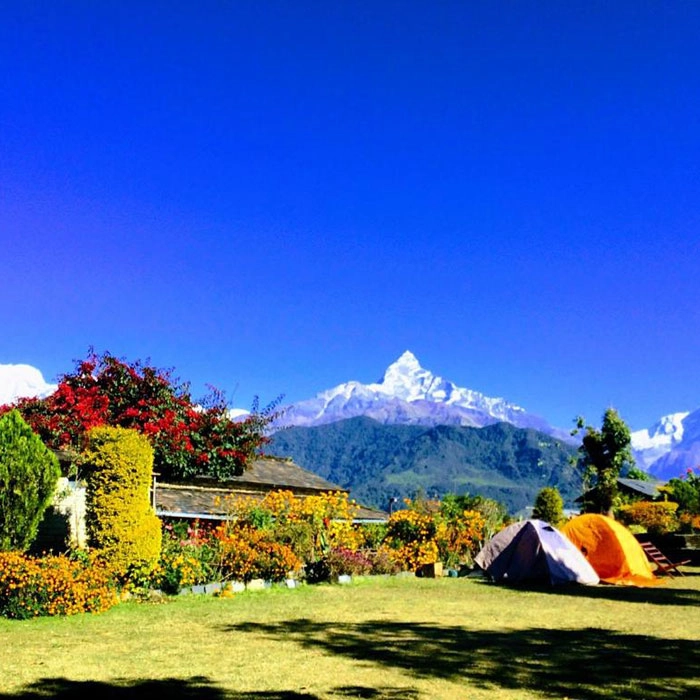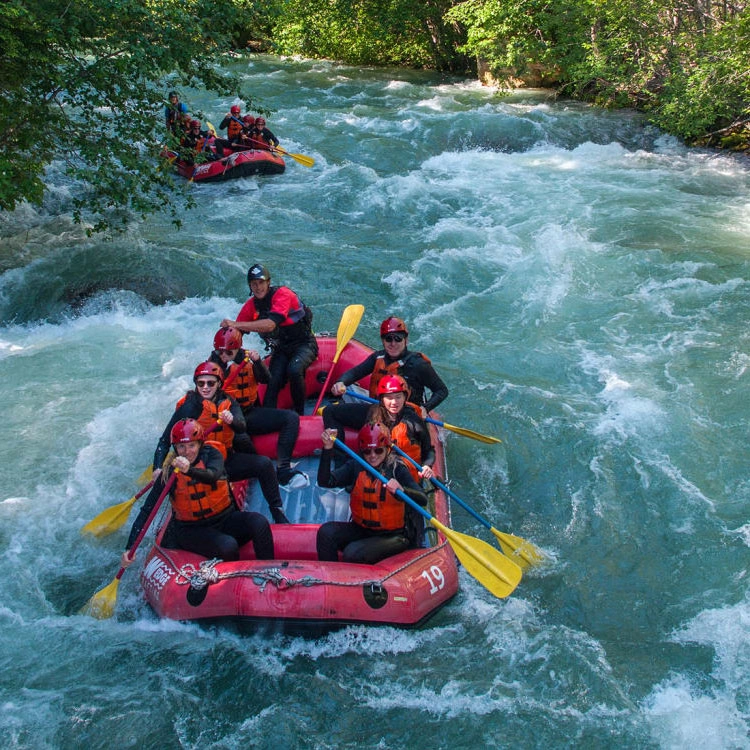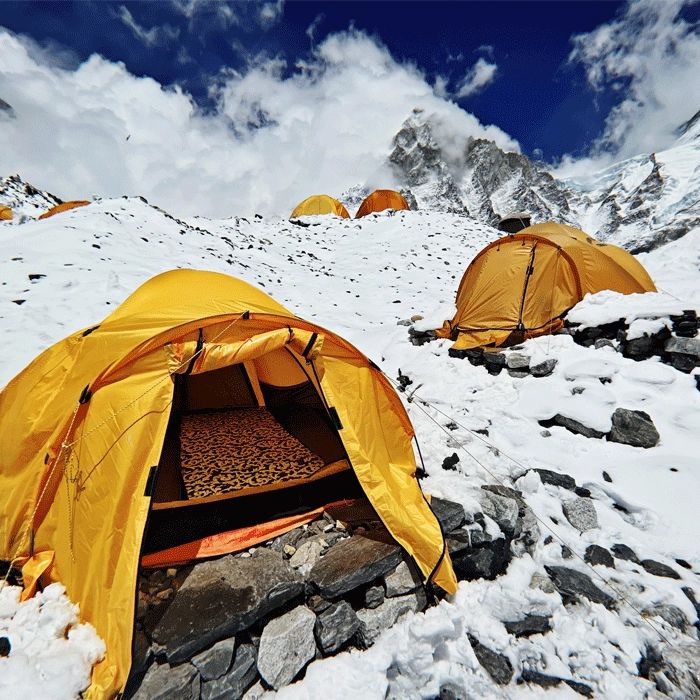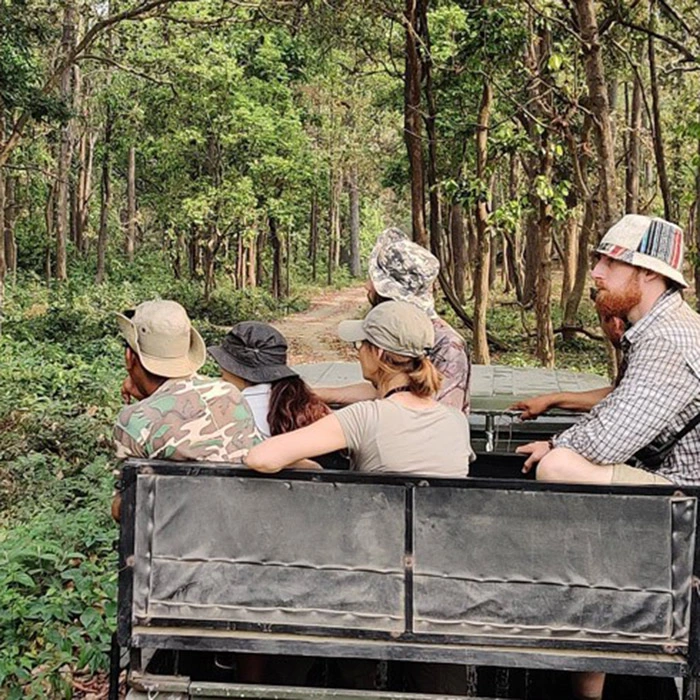BHIMTHANG VALLEY TREK
US$1,800.00
/pp
-
14 Days
-
Manaslu
-
Spring/Autumn
-
Trekking
-
3,720 Meters
-
Moderate
-
Car /Jeep
-
01-16 People
-
JH#260
 Overviews
Overviews
Embark on the Bhimthang Valley Trek, an exceptional journey through Nepal’s Annapurna Conservation Area and Manaslu Region. This trek offers breathtaking views of towering peaks, including Mount Manaslu (8,163 m), the eighth highest mountain in the world. Renowned for its diverse landscapes and stunning scenery, the Bhimthang Valley Trek is an ideal conclusion to the Manaslu Circuit trek. The trail follows the Marshyangdi River and Dudh Khola, guiding you through vibrant Buddhist and Hindu villages. Along the way, you’ll encounter picturesque villages, pristine lakes, and lush valleys, all set against a backdrop of rich flora and fauna. One of Bhimthang Valley Trek's standout features is the Ponkar Glacier. This glacier feeds into the serene Ponkar Lake. Often known as the Ponkar Glacier Trek, this route is categorized as moderate. It’s accessible for those with some trekking or hiking experience. The best times to undertake this trek are from February to June and September to November. These months offer the ideal weather and trail conditions. After completing Bhimthang Valley Trek, you’ll travel to Besishahar and catch a public bus to Kathmandu. During your rest day in Kathmandu, explore key cultural landmarks. Visit Bhaktapur Durbar Square, the Buddhist stupa of Bouddhanath, and the sacred Hindu temple of Pashupatinath. These sites provide a rich insight into Nepal’s cultural heritage and history. For those looking to extend their adventure, consider a 2-night, 3-day jungle safari in Chitwan National Park. This extension offers a fantastic chance to experience Nepal’s diverse wildlife and immerse yourself in the country’s vibrant natural beauty. Bhimthang Valley Trek DifficultyThe Bhimthang Valley Trek is considered a moderate trek, suitable for trekkers with a basic level of fitness and some prior hiking experience. The trail reaches elevations of over 3,590 meters (11,778 ft) at Bhimthang and typically involves 5 to 7 hours of trekking per day through rhododendron forests, alpine meadows, and glacial valleys. While the terrain includes some steep ascents and descents, it does not require technical skills or high-altitude mountaineering experience. With proper acclimatization and pacing, the trek is manageable for most trekkers and offers stunning views of Mt. Manaslu and the surrounding peaks, making it a rewarding journey for those looking for a less crowded alternative in the Himalayas. Bhimthang Valley Trek CostThe Bhimthang Valley Trek cost typically includes essential services such as a licensed trekking guide, porter assistance, Annapurna Conservation Area (ACAP) and TIMS permits, teahouse accommodations, all meals during the trek, and ground transportation to and from the trailhead. Solo trekkers benefit from personalized support, while groups enjoy tiered pricing, with per-person rates decreasing as group size increases. We also offer special seasonal promotions during off-peak months to make this scenic trek more budget-friendly. Although our website lists standard international pricing, you’re invited to contact us directly for private-group quotes, where we promise the best possible price without compromising on service quality, comfort, or safety for your journey through Nepal’s tranquil Bhimthang Valley.
 Itinerary (Plan)
Itinerary (Plan)
Arrive in Kathmandu, Nepal's vibrant capital, where you'll be warmly welcomed with marigold garlands. After transferring to your hotel, take time to relax and acclimate to the bustling city. Discover vibrant local markets, indulge in traditional Nepali dishes, and delve into Kathmandu's rich cultural tapestry. This initial day is perfect for easing into your journey, setting the stage for the exciting adventures ahead in Eastern Nepal. A representative from Jagadamba Holidays will ensure a smooth and pleasant arrival. Overnight stay in Kathmandu.
Optional Evening Activity:
If you wish, you can spend your evening experiencing the Pashupatinath Aarti, a captivating religious ceremony held at the Pashupatinath Temple. The Aarti usually begins around 6:00 PM and lasts for approximately an hour. This ceremony is a mesmerizing display of traditional music and rituals, providing a profound insight into Hindu spiritual practices. Please check the exact time for the Aarti on the day of your visit, as it may vary. This option is not included in the standard itinerary but offers a unique opportunity to immerse yourself in local culture.
Discover Kathmandu’s rich cultural heritage with a guided tour of its most iconic landmarks. Enjoy a comprehensive exploration of three must-see sites that highlight Nepal’s diverse religious traditions and architectural splendor.
Bhaktapur Durbar Square:
Begin your day at Bhaktapur Durbar Square, a UNESCO World Heritage Site renowned for its medieval architecture. This historic square is home to intricately carved temples, palaces, and courtyards that reflect the grandeur of the Malla period. Stroll through the square and marvel at the traditional Newari architecture and craftsmanship.
Boudhanath Stupa:
Next, visit Boudhanath Stupa, one of Nepal’s largest and most significant Buddhist stupas. This grand mandala, encircled by monasteries and prayer wheels, serves as a central hub for Tibetan Buddhism in Nepal.. The serene atmosphere and vibrant Tibetan culture offer a unique and peaceful experience.
Pashupatinath Temple:
Conclude your tour with a visit to Pashupatinath Temple, a revered Hindu sanctuary dedicated to Lord Shiva. Located along the Bagmati River, this temple complex features impressive pagoda-style architecture and serves as a major center for Hindu rituals. Witness the spiritual ambiance and observe traditional ceremonies at this revered site.
Enjoy a guided exploration of these significant landmarks, immersing yourself in the cultural and historical richness of Kathmandu. Overnight stay in Kathmandu.
After a hearty breakfast in Kathmandu, trekkers begin a picturesque drive to Ngadi Bazar, a quaint village located at 930 meters. This route offers stunning views of the Himalayan foothills and lush landscapes, serving as the gateway to the Manaslu and Bhimthang Valley trekking regions. The drive, covering approximately 186 kilometers, typically takes 7-8 hours and takes you through a landscape that transitions from the urban sprawl of Kathmandu to the lush, terraced hills of the countryside. Along the way, you’ll traverse winding roads with spectacular views of the rivers, terraced fields, and traditional Nepali villages.
This road trip offers a glimpse into rural life and the natural beauty of Nepal. As you drive, you may pass by local markets, small streams, and picturesque landscapes that are perfect for photography. Upon arrival in Ngadi Bazar, you’ll have time to settle into your accommodation, enjoy a meal, and prepare for the trek that starts the following day. Ngadi Bazar is a tranquil village, providing a serene environment to rest and acclimate to the new surroundings.
After enjoying a hearty breakfast in Ngadi, we began our trek for the day, energized and ready to explore the scenic Himalayan trails. Today’s journey takes us from Ngadi to Jagat, covering approximately 14 kilometers in 5–6 hours. Along the route, we ascend around 670 meters over gentle slopes and forested paths and descend roughly 300 meters through serene valleys and alongside flowing streams.
The trek from Ngadi to Jagat winds through lush terraced fields and green forests, offering stunning views of the Marsyangdi River and the surrounding Himalayan hills. Along the trail, trekkers pass through charming rural villages, where they can experience authentic Himalayan culture. Traditional stone houses, vibrant prayer flags, and centuries-old farming practices provide a glimpse into local life, far from the crowds of popular tourist routes. This scenic and cultural journey makes the Bhimthang Valley Trek in the Manaslu region a truly memorable Himalayan adventure.
As we approach Jagat, situated at 1,300 meters, the village’s serene environment and traditional architecture provide a perfect spot to rest and acclimatize. Trekkers can explore the village, enjoy warm meals at local lodges, and relax in the tranquil setting while soaking in the natural beauty. Jagat’s peaceful atmosphere offers a perfect introduction to the Bhimthang Valley Trek, setting the tone for the challenging yet rewarding days ahead.
This first day combines moderate trekking with cultural immersion, panoramic river valley views, and an introduction to the natural and human landscapes of the Manaslu region, making it a memorable start to the journey.
After a hearty breakfast at the lodge in Jagat, trekkers begin their journey toward Dharapani, energized for the adventure ahead. This section of the trek spans approximately 15 kilometers and typically takes 5–6 hours to complete, with a steady ascent of 850 meters and a gentle descent of 220 meters. The trail offers a perfect introduction to the diverse landscapes of the Manaslu and Annapurna regions, winding through lush forests, terraced farmland, and the vibrant flora of the Himalayan mid-hills. Along the way, trekkers are treated to panoramic views of surrounding peaks while gradually acclimatizing to the increasing altitude as they move deeper into this pristine trekking region of Nepal.
The route from Jagat to Dharapani is dotted with several charming suspension bridges over the Marsyangdi River, offering breathtaking views of the turquoise water below and the verdant hills surrounding the valley. Trekkers also pass through traditional Nepali villages, providing opportunities to interact with local communities and observe rural Himalayan lifestyles. Colorful prayer flags flutter above stone houses and small terraced fields, showcasing the rich culture and heritage of this remote region and adding a unique cultural dimension to the trekking experience.
Dharapani, located at 1,860 meters (6,102 feet), serves as a key stop along both the Annapurna and Manaslu trekking routes. This bustling village blends Tibetan and local cultures, offering comfortable lodges, restaurants, and shops for trekkers to rest and replenish supplies. Exploring Dharapani allows visitors to sample local cuisine, enjoy the serene Himalayan surroundings, and prepare for the next stage of the trek. Its strategic location along the circuit makes it an ideal base for acclimatization and a memorable part of the journey through Nepal’s scenic and culturally rich highlands.
The day begins with a scenic trek from Dharapani, winding through the charming Himalayan villages of Thoche and Tilche. The trail passes dense forests, terraced farmlands, and traditional Tibetan-style settlements, offering trekkers a genuine glimpse into rural Himalayan life. Along the way, enjoy sweeping panoramic views of rolling hills, river valleys, and pristine natural landscapes, creating a peaceful and immersive trekking experience. The journey leads to Bhimthang, also called Bimthang, a tranquil Himalayan valley in the Manaslu region, renowned for its breathtaking scenery, cultural villages, and authentic Nepalese mountain charm.
The trek from Dharapani to Gowa spans approximately 10.2 kilometers and typically takes 4–5 hours to complete. Trekkers ascend around 680 meters and descend roughly 40 meters, making this section a moderate but rewarding hike suitable for acclimatization. The trail features a mix of forest paths, ridges, and scenic suspension bridges over the Marsyangdi River, providing both adventure and breathtaking views of the Himalayan terrain.
Gho, located at an elevation of 2,550 meters (8,366 feet), is a charming village and the perfect overnight stop. Surrounded by rolling hills and lush forests, it offers stunning vistas of the Manaslu range and nearby peaks. With its Tibetan-style architecture, colorful prayer flags, and warm local hospitality, Gho provides a tranquil environment for rest, acclimatization, and preparation for the next stage of the Bhimthang Valley trek.
The day begins with a scenic trek from Gowa, passing through the village of Surki Khola and gradually ascending into the high-altitude terrain of the Manaslu region. The trail traverses dense rhododendron forests, alpine meadows, and rugged mountain landscapes, offering trekkers uninterrupted views of the snow-capped peaks. As the trek progresses, the scenery opens to expansive valleys and panoramic vistas of the Manaslu and Annapurna ranges, providing a rewarding and immersive Himalayan experience.
This section of the trek covers approximately 13.2 kilometers and generally requires 6–7 hours to complete. Trekkers ascend roughly 1,230 meters while descending approximately 50 meters along the route. The path includes a combination of forest trails, open meadows, and ridges, making the trek moderately challenging while allowing for proper acclimatization. Bridges and small streams along the way enhance the trekking experience with variety and interest.
Bhimthang, located at an elevation of 3,720 meters (12,205 feet), is a high-altitude plateau celebrated for its dramatic mountain vistas and tranquil environment. Bhimthang Valley, also called Bimthang, is a tranquil Himalayan destination in Nepal’s Manaslu region, renowned for its scenic landscapes and traditional mountain culture. The village features traditional Tibetan-style architecture, vibrant prayer flags, and local settlements, offering trekkers an authentic encounter with Himalayan culture. Surrounded by jagged peaks, expansive meadows, and pristine natural landscapes, Bhimthang provides an ideal location to rest, acclimatize, and appreciate the unparalleled beauty of the Manaslu region. This destination represents a significant highlight of the Bhimthang Valley Trek, combining adventure, cultural richness, and natural splendor in one distinguished journey.
Spend a relaxing day in Bhimthang, immersing yourself in the serene atmosphere of this high-altitude Himalayan plateau. Trekkers can enjoy a leisurely pace, taking in panoramic views of surrounding peaks, expansive meadows, and traditional Tibetan-style settlements. This day allows for proper acclimatization while giving you a chance to rest and rejuvenate amidst the tranquil beauty of the Manaslu region.
For those seeking additional adventure, an optional excursion to Ponkar Lake and Nayamlo Lake is highly recommended. These pristine alpine lakes are celebrated for their crystal-clear waters, reflecting the surrounding jagged peaks and lush landscapes. The trail to the lakes passes through vibrant rhododendron forests, alpine meadows, and small streams, offering trekkers an immersive experience of the region’s unique flora and fauna.
The excursion is moderately challenging, suitable for those acclimatized to Bhimthang’s elevation of 3,720 meters (12,205 feet). The trek provides not only breathtaking photography opportunities but also a chance to engage with the natural environment, observe high-altitude birdlife, and enjoy the peaceful solitude of the Himalayan wilderness. Ponkar Lake and Nayamlo Lake offer serene settings for quiet contemplation, nature photography, and experiencing the breathtaking landscapes of the Manaslu region.
Returning to Bhimthang in the afternoon, trekkers can relax in the village, taking in views of the Bhimthang Valley, surrounding peaks, and traditional settlements. This optional day excursion enhances the overall experience of the Bhimthang Valley Trek, blending adventure, nature, and cultural exploration into one unforgettable high-altitude journey through Nepal’s Manaslu region.
Embark on a mesmerizing trek from the alpine village of Bhimthang to the peaceful settlement of Kharche or Surki Khola (2,700 meters / 8,858 feet), journeying through some of the most scenic forest trails on the renowned Manaslu Circuit trek. Begin your day by exploring the stunning natural beauty of Bhimthang, including the serene Gonngar Lake, framed by spectacular Himalayan peaks.
The trail to Surki Khola winds through dense rhododendron and pine forests, alongside crystal-clear streams, offering trekkers a true taste of Nepal’s pristine wilderness. Wildlife enthusiasts may catch glimpses of native Himalayan fauna along the way, enhancing the immersive trekking experience. This section is perfect for those seeking a blend of nature, tranquility, and cultural insight in the heart of the Manaslu region.
Covering a distance of approximately 10 kilometers (6.21 miles), this trek typically takes 4 to 5 hours to complete. Today’s route features a mostly downhill journey, with a significant descent of 1,010 meters (3,313 feet) and a minimal ascent of about 20 meters (66 feet), making it a manageable and refreshing day for trekkers acclimatizing or easing into lower altitudes.
As you approach Kharche or Surki Khola, be rewarded with breathtaking views of lush valleys and snow-capped Himalayan peaks. Upon arrival, relax and soak in the serene atmosphere, preparing for the next stage of your unforgettable Manaslu trekking adventure.
The day begins with a scenic trek from Surki Khola (or Kharche) to Taal Village (1,700 m / 5,577 feet), traversing lush forests, terraced fields, and traditional Himalayan villages. As the trail descends, trekkers can enjoy flowing streams, verdant landscapes, and distant mountain vistas, providing an immersive experience of rural Himalayan life in the Manaslu region.
This trek covers approximately 20.4 kilometers and typically requires 6–7 hours to complete. Trekkers ascend around 180 meters and descend roughly 1,220 meters, making it a predominantly downhill trek. The route features forest trails, ridges, and river valleys, offering both adventure and scenic variety along the way.
Tal, situated at the edge of the Annapurna region, is a prominent destination that marks both a key stop on the Annapurna Circuit Trek and the concluding section of the Manaslu Circuit Trek. Surrounded by terraced farmlands, traditional villages, and panoramic mountain views, Tal provides an ideal location to rest, reflect, and appreciate the rich natural beauty, cultural heritage, and Himalayan landscapes. This stage of the trek perfectly blends adventure with tranquility, making it a highlight of the journey.
The day begins with a scenic trek from Tal to Syange, passing through terraced farmlands, traditional Himalayan villages, and lush forested trails. Trekkers gradually descend while enjoying panoramic views of the Manaslu Circuit, flowing rivers, and the pristine rural landscapes of Nepal’s Himalayas. This stage offers a peaceful and picturesque transition from the high-altitude regions of the Manaslu region to lower elevations, making it a highlight for those seeking both adventure and cultural experiences.
The trek covers approximately 12.7 kilometers and typically requires 4–5 hours to complete. Along the route, trekkers ascend around 290 meters and descend roughly 840 meters, making it a moderate downhill trek. The trail includes village paths, small bridges, and forested areas, providing both cultural insight and natural beauty throughout the journey.
Upon reaching Syange, travelers are transferred by vehicle to Besisahar for overnight relaxation. The drive from Syange to Besisahar is approximately 25 km. On the hilly roads of the region, it typically takes 1–1.5 hours by vehicle, depending on road conditions and traffic. Besisahar serves as a comfortable stop with essential amenities, offering a chance to rest and rejuvenate after the trek. This stage of the journey combines scenic trekking, cultural experiences, and the tranquility of rural Himalayan life, making it a memorable conclusion to the Manaslu Circuit Trek.
After completing your unforgettable Bhimthang Valley Trek along the Annapurna and Manaslu Circuit trails, begin your scenic drive from Besisahar to Kathmandu. The journey follows the Prithvi Highway, passing through Dumre and Mugling, covering approximately 176 km and typically taking 6–7 hours, depending on road and traffic conditions.
The drive offers breathtaking views of the Trishuli River, terraced farmlands, and the rolling foothills of the Annapurna and Manaslu ranges. Travelers can observe local villages, roadside markets, and traditional Nepalese rural life, providing an authentic cultural experience beyond the trekking trails.
This final leg marks the transition from the tranquil, high-altitude landscapes of the Himalayas to the bustling capital city. It is an ideal time to reflect on your trekking journey, the panoramic mountain vistas, vibrant local culture, and the physical achievements accomplished during the Bhimthang Valley Trek.
Arriving in Kathmandu, you conclude your Bhimthang Valley Trek, leaving with lasting memories of Nepal’s majestic mountains, serene landscapes, and authentic Himalayan experiences.
The buffer day in Kathmandu serves as a crucial safety net during your trekking adventure in the Himalayas. Given the unpredictable nature of mountain weather and the potential for flight delays, this day is designed to ensure a smooth travel experience. By including a buffer day in your itinerary, you can mitigate the impact of unforeseen circumstances and allow for a more relaxed journey.
If your flights operate as scheduled and weather conditions are favorable, this day offers a fantastic opportunity to explore the rich cultural and historical tapestry of the Kathmandu Valley. The valley is a UNESCO World Heritage Site, home to seven remarkable monument zones, each showcasing unique aspects of Nepalese culture and heritage.
You can begin your exploration in the heart of Kathmandu at Durbar Square, where ancient palaces, temples, and courtyards tell the story of the city's royal history. Marvel at the intricately carved architecture of Kastamandap and Kasthamandap Temple, and don’t miss the iconic Kumari Ghar, the residence of the living goddess, or Kumari.
Next, consider visiting Swayambhunath, also known as the Monkey Temple, perched atop a hill overlooking the valley. This ancient stupa is adorned with colorful prayer flags and offers panoramic views of the city and surrounding mountains. The site is also home to many monkeys, adding a playful element to your visit.
For a more spiritual experience, you can head to Boudhanath Stupa, one of the largest stupas in the world. This sacred site is a significant pilgrimage destination for Buddhists and features a bustling marketplace filled with traditional shops and eateries. Here, you can observe the rituals of local monks and engage with the community while enjoying a delicious bowl of traditional Nepali dal bhat.
If you have time, a trip to Pashupatinath Temple, one of the holiest Hindu temples in the world, is a must. Situated along the banks of the Bagmati River, this temple complex is a hub of religious activity, where you can witness traditional cremation ceremonies and explore the serene surroundings.
Throughout your day of exploration, immerse yourself in the vibrant local culture, indulge in delectable street food, and engage with the friendly locals. This buffer day not only acts as a precautionary measure for travel disruptions but also enhances your overall experience in Nepal, allowing you to discover the breathtaking beauty and rich history of the Kathmandu Valley. Whether your journey is uninterrupted or you need to utilize this day for adjustments, it promises to be a memorable addition to your adventure in the Himalayas.
Concluding Your Journey in Nepal
As your remarkable journey through the Himalayas comes to an end, take a moment to reflect on the awe-inspiring natural beauty, rich cultural heritage, and memorable experiences that have defined your time in Nepal. From the majestic mountain landscapes to the warm hospitality of the local communities, every moment has contributed to an unforgettable adventure.
Airport Transfer by Jagadamba Holidays
To ensure a smooth and timely departure, an official representative from Jagadamba Holidays will collect you from your hotel 3.5 hours prior to your scheduled flight departure. Our team is committed to providing a reliable and comfortable transfer service to Tribhuvan International Airport, allowing you to conclude your journey with peace of mind.
We sincerely appreciate your trust in Jagadamba Holidays and hope to have the pleasure of serving you again on your future journeys.
Quotation 2025
| Group Size (Pax) |
1 - 2 |
3 - 4 |
5 - 6 |
7 - 8 |
9 - 12 |
13 - 16 |
17 - 20 |
21 - 24 |
25 - 32 |
| Cost Per Person |
$1,620 |
$1,590 |
$1,560 |
$1,530 |
$1,500 |
$1,470 |
$1,430 |
$1,380 |
$1,320 |
 Cost Include
Cost Include
- All transfers within Nepal are included as per itinerary
- Any domestic flight of Nepal as per trekking itinerary
- Trekking accommodation (hotel, lodge and/or tent) as per itinerary
- Small shared room with shared bathroom during trek in Nepal
- In Kathmandu and/or Pokhara: Stay at ***Hotel with breakfast
- Luggage for porters during the trek (12.5 kg/person)
- 3 meals (Breakfast, Lunch and Dinner) during the trek
- Unlimited tea or coffee for breakfast during the trek
- An English speaking guide (trekking/tour) as per Itinerary
- Travel insurance for trekking staff (guides and porters)
- All expenses of trekking staff(s) during trekking
- Includes all conservation, national park, trekking, and climbing permits
- Sightseeing / Wildlife tours if included in the itinerary
- Farewell dinner in Kathmandu before returning home
 Cost Exclude
Cost Exclude
- Single room/single tent surcharge (on request)
- Round trip/one way international flight ticket to Nepal.
- Tourist visa for Nepal (30-50 $, depending on length of stay)
- Personal Insurance (covers: Trip/flight cancellation, helicopter rescue)
- Meals (lunch, dinner) at hotels in Kathmandu, Pokhara and other cities
- Drinks (soft, hot or mineral/boiled water) during the lodge trek
- Any personal trekking and/climbing equipment for trekking in Nepal
- Hotel expenses in case of early return from trekking for any reason
- Costs due to flight cancellations & extra porters/horses during the trek
- Additional costs incurred due to any reason beyond Jagdamba’s control
- More evidence about pandemics like COVID-19 if needed in the future.
- Personal expenses during the trek (phone, wifi, shower, charging etc.)
- Other costs and things that are not mentioned in the service inclusion
- Gratuity for trekking staff (recommended: 9€ /10$ per traveler per day)
|



 Overviews
Overviews
 Trip Overview
Trip Overview
 Travel Itinerary
Travel Itinerary
 Cost Include
Cost Include
 Cost Exclude
Cost Exclude
 Fixed Departure
Fixed Departure
 Route Map
Route Map

 Freqeuntly Asked Questions
Freqeuntly Asked Questions
 Reviews And Rating
Reviews And Rating
